Homemade Persimmon Wine Recipe
It's certainly not a common wine but we believe it should be more popular. Naturally sweet and quick to ferment, it's a winemakers dream!
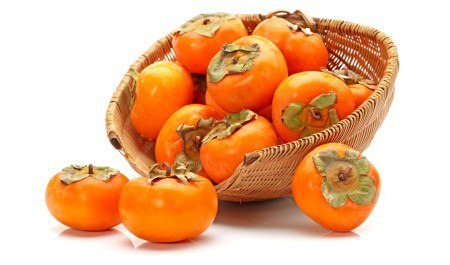
In many ways, persimmons are the ideal fruit for homemade wine. Not only are they easy to prepare, they are also rich in natural sugars – which are a crucial component in the fermentation process.
Compared to most other homemade fruit wines, persimmon wine takes a relatively short time to ferment.
Originating from Korea, this persimmon wine recipe will have you relaxing with a glass of sweet, refreshing homemade liquor in just four months!
Ingredients
For one gallon of persimmon wine, you’ll need:
- 3 lbs persimmons – the Hachiya variety is recommended for wine, but it’s entirely possible to make wild persimmon wine if that’s what you have on hand
- 2.5 lbs sugar
- 1 tsp acid blend
- 1 gallon filtered water
- 1 packet wine yeast
- ½ tsp yeast nutrient
- ½ tsp pectic enzyme
- 1 Campden tablet
Optional:
- ½ tsp wine stabilizer
Equipment
- 1 primary vessel – this is where initial fermentation will take place. A fermenting bucket would be ideal, but if you don’t have access to one, any food-safe, non-reactive, container with a lid will do just fine, provided it’s not airtight.
- 2 glass demijohns with a fitted airlock and bung – for secondary fermentation. The reason why two of these are needed is that the persimmon wine will need to be transferred to a clean vessel several times during the later stages of fermentation.
- potato masher or a fork for mashing the fruit into a pulp
- siphon tube for racking your wine after primary fermentation
- strainer or sieve
- glass bottles to hold the finished persimmon wine.
How to Make Persimmon Wine – Recipe
1. Preparing the fruit
Start by peeling, washing, and seeding the persimmons, then cut them into quarters.
Your fruit should be ripe – you can tell whether persimmons are ready to eat by their color (full and uniform) and firmness (they should be slightly soft).
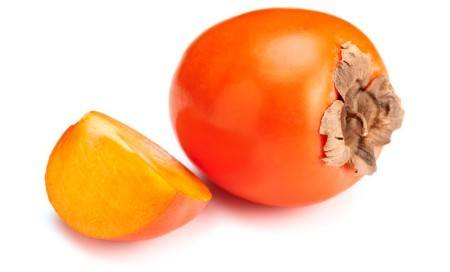
Almost every persimmon wine recipe out there calls for Hachiya persimmons, largely because they’re the sweetest variety. However, wild persimmon will also work fine, although you may need to add a bit of extra sugar.
Also, if you’re making wild persimmon wine, preparation will be slightly more complex, as wild varieties of the fruit have more seeds.
Once your fruit is ready, mash it into a pulp. This is easily done using a potato masher or a similar tool – if you haven’t got one of these, you can just use a fork.
Recommended: Check out this homemade lemon wine recipe next!
2. Mixing the ingredients and primary fermentation
Place the fruit into the primary vessel – a fermenting bucket, large pan, or any other container which is food-safe and non-reactive. Ensure you don’t use an airtight container, as this will stall the fermentation process.
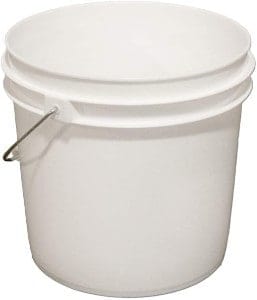
Add the acid blend, yeast nutrient, half of the sugar, and a crushed Campden tablet to the persimmon pulp. Campden tablets get rid of any wild yeasts and naturally-occurring bacteria, effectively sterilizing the pulp.
This ensures a predictable fermentation process, prevents the wine from spoiling, and eliminates the need to boil the ingredients.
Lastly, add the water and stir the mixture well, ensuring all of the sugar has dissolved. When your ingredients have combined, cover the container and leave the mixture to rest for approximately 12 hours. This will give the Campden tablet time to work properly.
After the 12 hours have passed, add yeast and pectic enzyme to the mix. Cover the container and leave to ferment for five to seven days, stirring daily.
3. Secondary fermentation
Once a week has passed, it’s time to get your wine ready for secondary fermentation.
Begin by straining the mixture through a fine-mesh strainer or sieve, allowing only the liquid to pass into another container. Make sure that both the strainer and the container have been properly sterilized – otherwise, you might end up with the wine spoiling rather than fermenting. Rinsing the tools with boiling water will usually suffice.
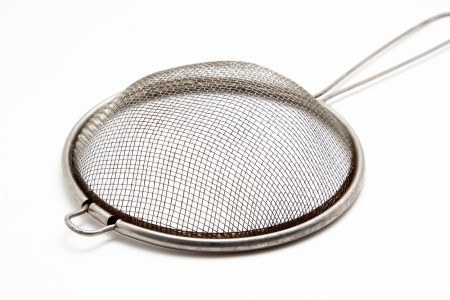
Carefully wash the primary vessel – i.e., the one you used for fermenting the mixture for the past seven days. Pour the liquid back into it and add the other half of the sugar, ensuring that it dissolves properly.
Next up, pour your soon-to-be persimmon wine into one of the demijohns and cover with a bung featuring a fitted airlock.
4. Racking
From now on, most of the process will take place without your involvement. The wine will need time to ferment, so patience is key!
As the yeast does its job, there will be some sediment forming in the bottom of the demijohn. You’ll need to rack the wine regularly to remove this residue from the final product.
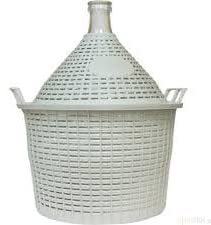
To this end, transfer the liquid into a clean demijohn using a sterilized siphon tube every three to four weeks. Take care when doing this to leave the sediment in the bottom of the first demijohn. Once the wine has been transferred, cover the new demijohn with the airlock and leave to rest again.
Secondary fermentation should take approximately three months, so you’ll need to rack the wine at least one more time before it’s ready to bottle. To determine whether fermentation has finished, watch the airlock: when the bubbles have stopped completely and the wine has cleared, it’s good to go!
Recommended: Check out this easy-to-follow homemade banana wine recipe next.
5. Bottling
Before you pour the wine into bottles, give it a small try. If it’s too dry for your taste, you can add some sugar at this stage. If you decide to sweeten your persimmon wine, it’s strongly advisable to add wine stabilizer, too.
By adding sugar, you run the risk of starting the re-fermentation process – after all, sugar is a form of sustenance for yeast. Wine stabilizer – specifically, potassium sorbate – prevents this process from taking place, ensuring your wine doesn’t continue to ferment.
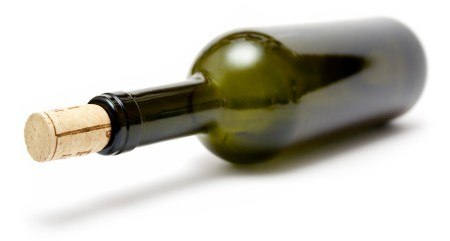
And you’re done! Once you’ve parcelled out the persimmon wine into clean bottles, cork or cap them, storing in a dark place. The wine is ready to drink by this point – unlike many other varieties of fruit wine, persimmon doesn’t need to rest prior to serving.
If you enjoyed this persimmon wine recipe, let us know – and make sure you try all of our other homemade wines!
